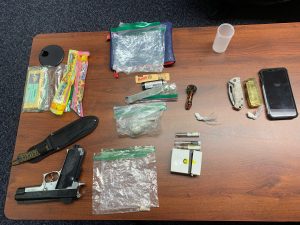The Department of Natural Resources & Environmental Control announces it has issued 15,500 of this year’s 17,000 available surf-fishing permits. In 2019, the Delaware’s Parks & Recreation Advisory Council established a 17,000 cap on annual surf-fishing permit sales as the most equitable way to serve all beach users, manage a limited resource and protect against overcrowding of parks beaches.
Starting Thursday, the Division of Parks & Recreation will reduce the number of locations where surf-fishing permits may be purchased; online sales will be unavailable. The following locations will issue surf-fishing permits until the 17,000 cap is reached:
Bellevue State Park: 800 Carr Road, Wilmington
Cape Henlopen State Park: 15099 Cape Henlopen Drive, Lewes
Killens Pond State Park: 5025 Killens Pond Road, Felton
Indian River Life-Saving Station: 25039 Coastal Highway, Rehoboth Beach
Surf-fishing permit transfers and replacements are also available at these sites. As a courtesy prior to reaching the 15,500 mark this year, the division issued an e-newsletter and contacted those who purchased surf-fishing permits in 2018 and 2019.
Novice surf anglers are encouraged to view the Surf Fishing at Delaware State Parks informational video that explains surf-fishing rules and regulations in Delaware, what equipment is needed, how to drive on the beach and what to do if a vehicle gets stuck in the sand. There are no current restrictions for non-vehicle, walk-on fishing for those with a valid Division of Fish & Wildlife fishing license. Walk-on surf anglers should only use pedestrian foot traffic access points to access surf-fishing beaches and should use caution near drive-on access points.
Surf-fishing permits also serve as a Delaware State Parks Annual Pass that provides access to all 17 state parks. Park user fees, including surf-fishing permit fees, provide 65% of the Division of Parks & Recreation’s funding, and are used to operate and maintain the parks.
To learn more about fishing in Delaware State Parks, visit destateparks.com/Adventures/Fishing.
About DNREC
The Delaware Department of Natural Resources and Environmental Control protects and manages the state’s natural resources, protects public health, provides outdoor recreational opportunities, and educates Delawareans about the environment. The Division of Parks & Recreation oversees more than 26,000 acres in 17 state parks and the Brandywine Zoo. For more information, visit the website and connect with DNREC on Facebook, Twitter or LinkedIn.
Media Contacts: Shauna McVey, shauna.mcvey@delaware.gov or Michael Globetti, michael.globetti@delaware.gov
###
